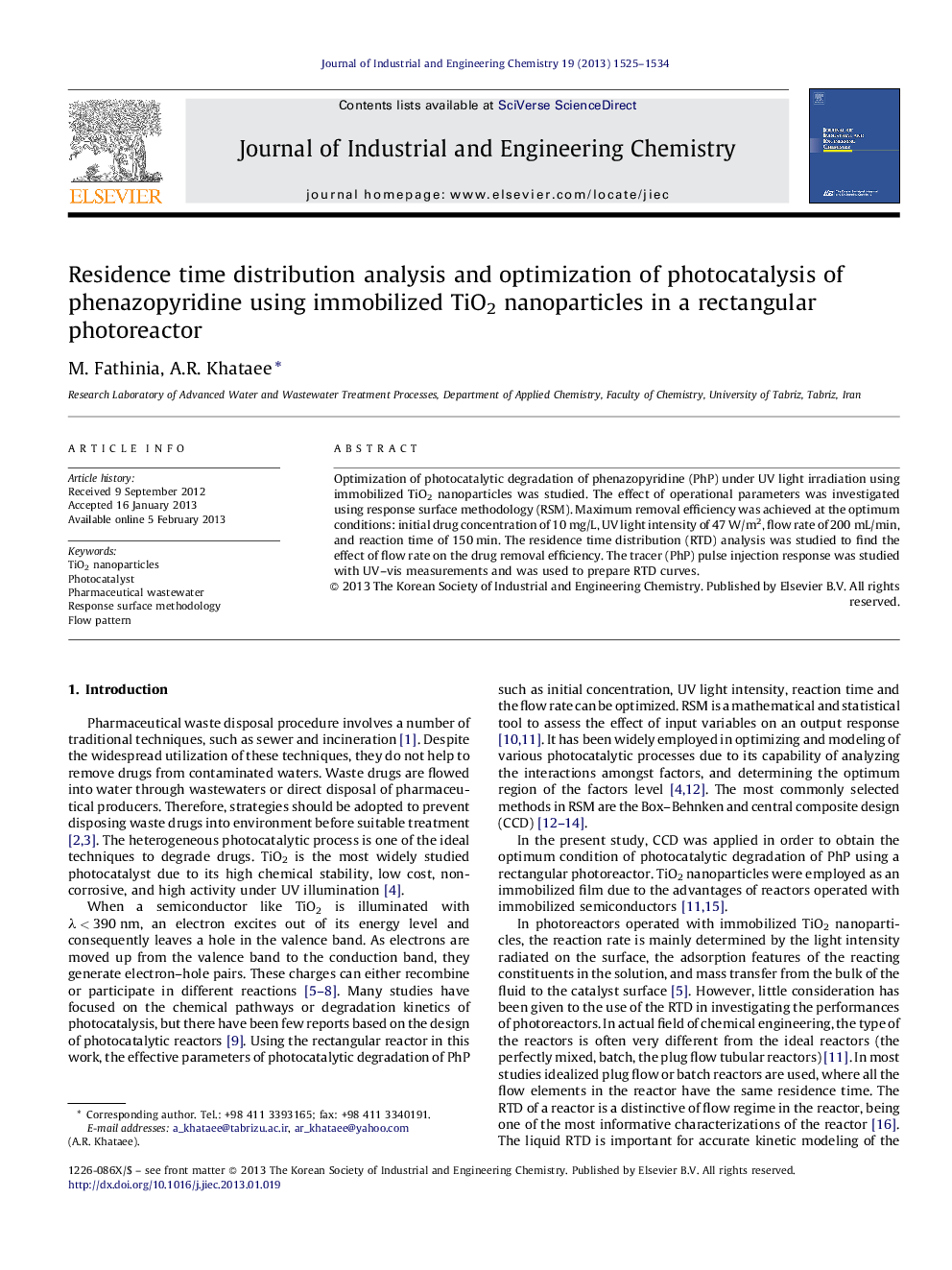| Article ID | Journal | Published Year | Pages | File Type |
|---|---|---|---|---|
| 227881 | Journal of Industrial and Engineering Chemistry | 2013 | 10 Pages |
Abstract
Optimization of photocatalytic degradation of phenazopyridine (PhP) under UV light irradiation using immobilized TiO2 nanoparticles was studied. The effect of operational parameters was investigated using response surface methodology (RSM). Maximum removal efficiency was achieved at the optimum conditions: initial drug concentration of 10 mg/L, UV light intensity of 47 W/m2, flow rate of 200 mL/min, and reaction time of 150 min. The residence time distribution (RTD) analysis was studied to find the effect of flow rate on the drug removal efficiency. The tracer (PhP) pulse injection response was studied with UV–vis measurements and was used to prepare RTD curves.
Keywords
Related Topics
Physical Sciences and Engineering
Chemical Engineering
Chemical Engineering (General)
Authors
M. Fathinia, A.R. Khataee,
